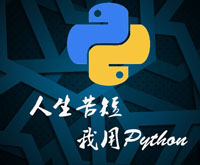你想构建一个能支持迭代操作的自定义对象,并希望找到一个能实现迭代协议的简单方法。
目前为止,在一个对象上实现迭代最简单的方式是使用一个生成器函数。使用Node类来表示树形数据结构。你可能想实现一个以深度优先方式遍历树形节点的生成器。下面是代码示例:
class Node:
def__init__(self, value):
self._value= value self._children=[] def__repr__(self):
return’Node({!r})’.format(self._value) def add_child(self, node):
self._children.append(node) def__iter__(self):
return iter(self._children) def depth_first(self):
yield self
for c in self:
yield from c.depth_first()# Example
if__name__==’__main__’:
root= Node(0) child1= Node(1) child2= Node(2)
root.add_child(child1) root.add_child(child2)
child1.add_child(Node(3)) child1.add_child(Node(4)) child2.add_child(Node(5))
for ch in root.depth_first():
print(ch)
# Outputs Node(0), Node(1), Node(3), Node(4), Node(2), Node(5)
在这段代码中,depth_first()方法简单直观。它首先返回自己本身并迭代每一个子节点并通过调用子节点的depth_first()方法(使用yield from语句)返回对应元素。
Python的迭代协议要求一个__iter__()方法返回一个特殊的迭代器对象,这个迭代器对象实现了__next__()方法并通过StopIteration异常标识迭代的完成。但是,实现这些通常会比较繁琐。下面我们演示下这种方式,如何使用一个关联迭代器类重新实现depth_first()方法:
class Node2:
def__init__(self, value):
self._value= value self._children=[] def__repr__(self):
return’Node({!r})’.format(self._value) def add_child(self, node):
self._children.append(node) def__iter__(self):
return iter(self._children) def depth_first(self):
return DepthFirstIterator(self)
class DepthFirstIterator(object):
”’
Depth-first traversal”’
def__init__(self, start_node):
self._node= start_node
self._children_iter= None self._child_iter= None
def__iter__(self):
return self
def__next__(self):
# Return myself if just started; create an iterator for children if self._children_iter is None:
self._children_iter= iter(self._node) return self._node
# If processing a child, return its next item elif self._child_iter:
try:
nextchild= next(self._child_iter) return nextchild
except StopIteration:
self._child_iter= None return next(self)
# Advance to the next child and start its iteration else:
self._child_iter= next(self._children_iter).depth_first() return next(self)
DepthFirstIterator类和上面使用生成器的版本工作原理类似,但是它写起来很繁琐,因为迭代器必须在迭代处理过程中维护大量的状态信息。坦白来讲,没人愿意写这么晦涩的代码。将你的迭代器定义为一个生成器后一切迎刃而解。

 千千惠生活达人注册
千千惠生活达人注册



